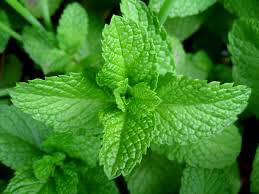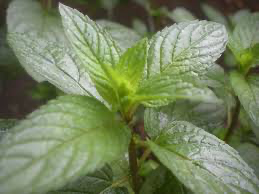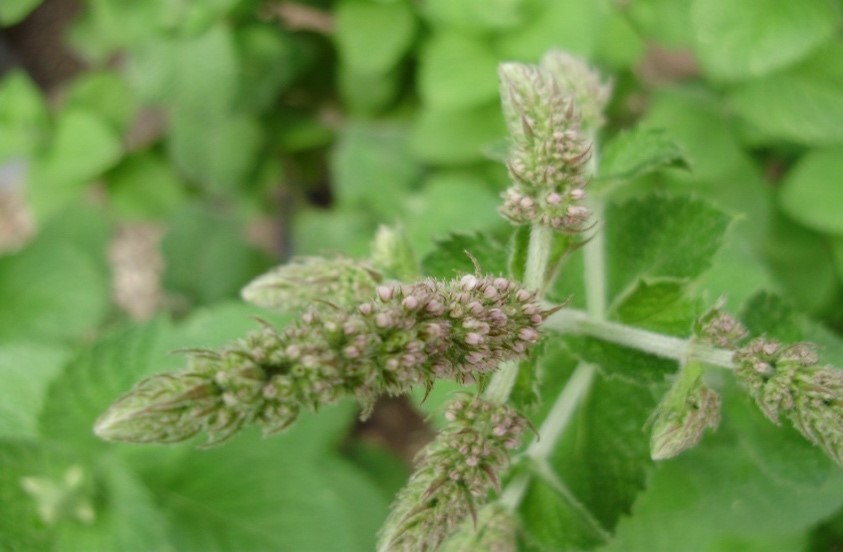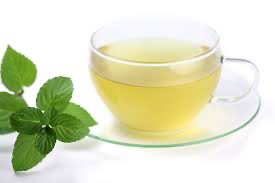Mint: Freshness Packed in a Leaf
Popularly known as a body coolant, mint is a generic term for the mentha plant family. In fact, it gets its name from Minthe, a Greek mythical character. There is a very interesting legend behind the origin of the mint plant. Greek mythology tells us that Queen Persephone was so jealous of Minthe because of her closeness to her husband Hades, that she confronted her and stepped on her with all her strength. In the course of the attack, Minthe got transformed into the ‘mint plant’. Every time Persephone stepped on her, she would emanate a delightful scent! The Greeks love to narrate this story to explain the origin of mint. In fact, in ancient times, the Greeks and Romans used to get their tables rubbed with mint before their guests arrived.

Peppermint

Spearmint

Mint flower-buds
Varieties
Numerous varieties come under the umbrella term called ‘mint’ – peppermint, spearmint, apple mint, orange mint and about 15 others. Spearmint is also known as the garden mint or common mint. One of the oldest herbs known to mankind, mint is called pudina in Hindi. There are no summers in India without mint to beat the heat! Peppermint and Spearmint are of course integral to the mint extract. While spearmint is the chosen mint for a savoury flavour, peppermint is the herb of choice when it comes to chocolate and citrus flavours.
Cultivation
Mint grows in cool and moist areas where there is shade. Its growth is very fast – 4 inches in a month. More than the height, it is its spread that is to be noted. The rhizomes creep away from the main plant and new plants are created in the process. It can spread to about 2 feet in six months. Initially, a few cuttings in a small pot that has moist soil will do. In about a week, it will begin to root. As it grows and spreads, it will have to be replanted in a larger pot or transferred to the ground. Peppermint on the other hand doesn’t have such rapid growth. The process, its growth and spread is very similar to that of spearmint. These plants are frost tolerant. They usually die in winter and come back in spring. This perennial plant has very fragrant, tiny, purple, pink, or white flowers. These plants have such a scent that it emanates in the garden or home where it is grown, all day long. Synagogue floors are often scattered with mint so that each step would result in its fragrance being released. Mint is considered a symbol of hospitality and wisdom.
Culinary and Nutritional Properties
The refreshing qualities of mint date to time immemorial. The herb has been used throughout history not just to freshen one’s breath, but to treat stomach and digestive disorders too. Fresh mint is usually preferred to dried mint. Mint leaves are unique when it comes to flavour – they are warm, fresh, sweet and to top it all, leaves a cool after taste. These qualities give teas, beverages, jellies, syrups, candies and ice creams a real twist in their flavour. Apart from their sensorial quotient, mint also has a pretty good nutritional quotient! They are a good source of protein, thiamin, niacin, Vitamin A, C, B6, iron, folate, calcium, zinc, magnesium and other minerals. Mint has been attributed to being very effective for weight loss, memory loss, skincare issues and the treatment of asthma too.

Potted mint plant

Mint tea
A Natural Freshener for the Household
Mint can replace chemicals for a few home remedies. Ants detest mint. So, a few sprigs of mint in places that should not be sprayed with chemicals will work well to keep ants at bay. Crushed mint leaves with baking soda will augment carpet cleaning. Let this mixture be spread all over the carpet and then vacuum it after an hour. You will see and smell the difference! Insects avoid eating and smelling herbs. Mint leaves added to mulch will help repel common insects that may otherwise destroy plants.
The value and importance of mint can be summed up in the words of a musician who once said, ‘luxury lives in the finer details…..it's a cloth napkin at a dinner table and a mint on your pillow before bed.’
 Government of India
Government of India

































 Recognizing the ongoing need to position itself for the digital future, Indian Culture is an initiative by the Ministry of Culture. A platform that hosts data of cultural relevance from various repositories and institutions all over India.
Recognizing the ongoing need to position itself for the digital future, Indian Culture is an initiative by the Ministry of Culture. A platform that hosts data of cultural relevance from various repositories and institutions all over India.